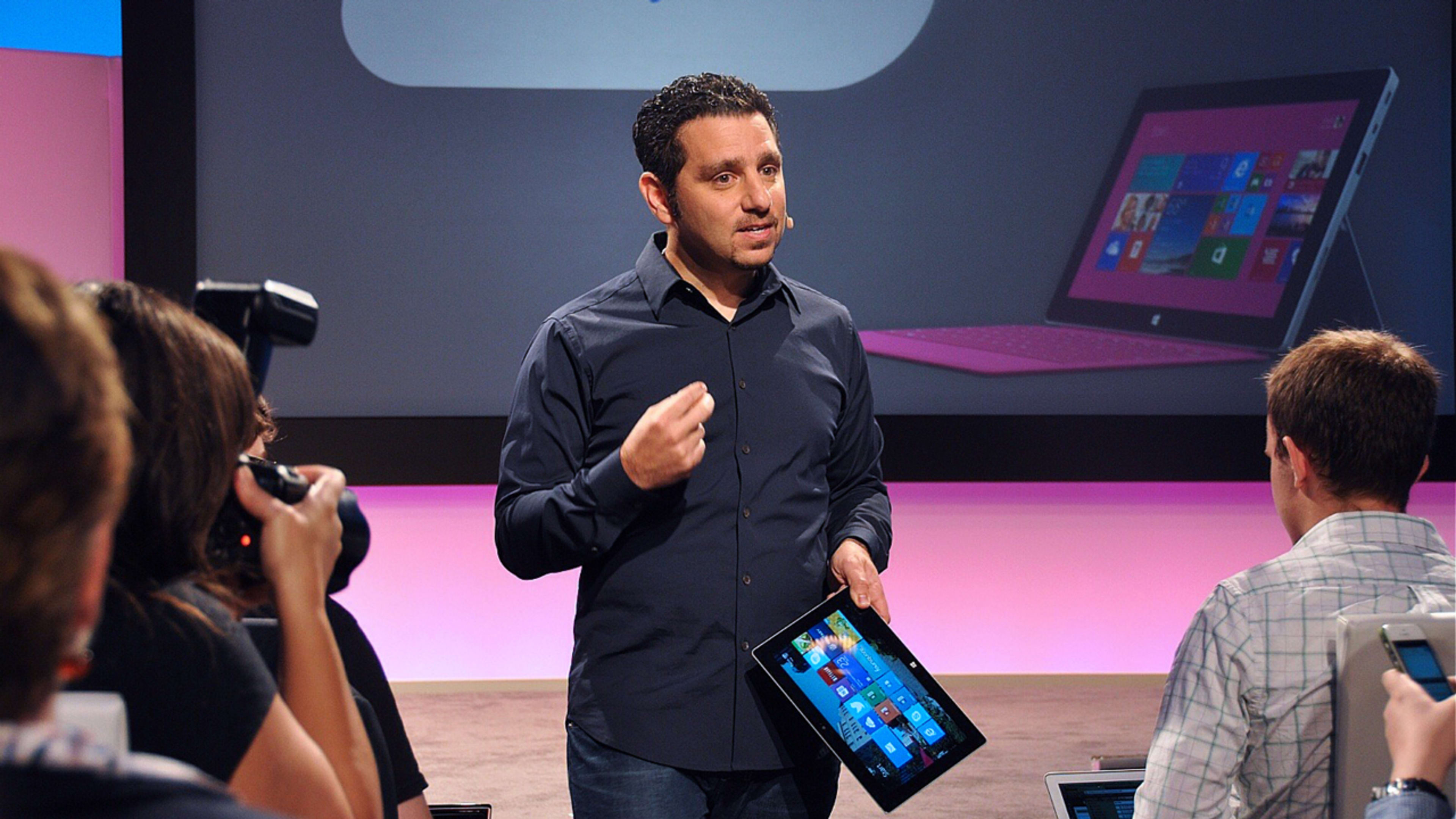Five years ago this month, following a dramatic onstage unveiling the previous June, Microsoft shipped the original Surface Pro. Part iPad rival and part next-generation notebook computer, the ambitious device was the first PC running full-blown Windows that Microsoft ever designed and sold itself—which made it a landmark for the company as well as the industry. That initial Surface Pro defied early critics (including, ahem, me) to become a signficant business for Microsoft and the progenitor of a line of additional products including the Surface Hub, Book, Studio, Dial, and Laptop. With everyone from HP to Apple entering the category it defined with their own tablet/laptop hybrids, it’s also been among the most influential computing devices of its era.
As the Surface Pro marks its first half-decade, I chatted about its past, present, and future with Microsoft corporate vice president Panos Panay, who has spearheaded the Surface effort from the start. The passion he’s exuded during various Surface launch events over the years—a rarity in any big-company product demo—was just as apparent during our conversation.
This interview has been edited and condensed for publication.
Fast Company: As you look back upon this journey—not just to the original announcement, but to the origins of the whole Surface project—what’s been most surprising to you?
Panos Panay: My brain goes to two places. I don’t know if it’s the word “surprising” as much as “humbling,” but they’re right in line with each other. The adoption across the industry of the vision that we were so anchored on from day one has been inspiring at every level. And the other side is that the team and the culture that was here day one are still here today. That’s the emotional part. It’s super inspiring, because you have a team that’s been through ups, downs, and—through it all—believe. Ninety percent of the people who started that project with me are still here.
I didn’t really realize that, by the way, until the anniversary came about, and we pulled everybody in a room and said, “Hey, here’s the first crew that went after this thing. You remember those days!” And that was powerful. That was emotional for me in a big way. Enough where I went home and talked to my family about how important it was to me to see the Surface family evolve through Microsoft, watch Microsoft evolve through our product, watch our processes evolve across the company, and bring Microsoft to life through Surface.
FC: You mentioned Microsoft changing. Obviously, it was quite a different company five years ago. How has Surface been part of that change, and how has that change influenced where Surface is going?
PP: The evolution of how we make Surface, why we make Surface, has grown with the company and its change. It also has been one of the catalysts to inspire how we make products across the company. I think you see that in the latest products. The idea that this device sits in the middle of the table across all teams. The Microsoft culture that Satya [Nadella] talks about in “One Microsoft,” this is the epitome of that: where you put the product in the middle of the table, metaphorically—but maybe not even metaphorically, we physically do it—and cross-company, teams sit in a room, inspired by the direction we want to take the products with a collection of hardware and software.
The importance of that feeling that the customer gets when they get a complete product is so critical.
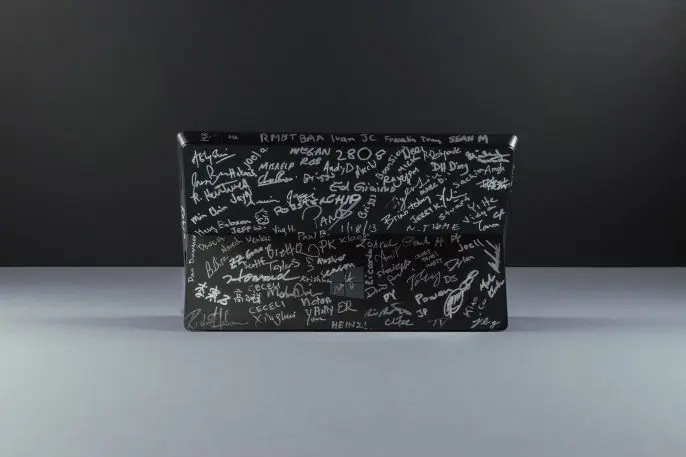
“I Look At Them Almost As One Product Now”
FC: You started with Windows 8 and a lot has happened between that launch and where Microsoft is today, with Windows 10. Can you talk about the experience of having built hardware for that software platform over the past five years and what you’ve learned and how you’ve worked with that team?
PP: We’ve learned a ton. With the integration of Windows and Surface, I look at them almost as one product right now. The idea that the Windows team spends its energy optimizing the core of our [Surface] products and it benefits the entire ecosystem, optimizing for battery life, optimizing for resolution, for input, for ink, for touch . . . it’s incredible, the integration now. Five years ago, we were building a product for Windows 8, but we hadn’t integrated the products, per se. It took some time, maybe a year or two, before we really got into it.
That integration isn’t just Windows now. It’s really important now to capture the integration with Office and Skype and OneNote. There’s huge tuning and learning and details that maybe customers can’t see, but they can feel. Even if they can’t explain why they feel that way. Those are the details, the nuances, the little things that are happening every single day across the company to optimize the experience of Microsoft on these products.
FC: I remember going to the original launch in L.A. and seeing the Surface Pro and the Surface RT, which didn’t run full Windows. Quite quickly, it was clear that the Pro was the one that was taking off. Were you surprised by the degree to which power users and creatives and other demanding users were the ones who gravitated toward the form factor you created?
PP: I actually was delighted. As a team, we were new. We didn’t really know what to expect, where the adoption would come from. We had focus on making people more productive. We wanted to bring Windows to life. We had very clear principles in making our products. I use the term, which I haven’t really shared out there, but we use a term called, “What’s the one thing?” And so when we first started, we talked about “What’s the one thing on this product that we need to get perfect?” And the rest will fall out. And let’s just get the one thing right.
Without customer feedback, when we first started, we were a little bit shooting in the dark. That one thing was going to be the kickstand and the click-in keyboard, and we were going make people as productive as we possibly could.
We started that with Surface RT and we brought it to Surface Pro, and then the one thing on Pro was, we gotta bring the pen back. Back them, I used to read articles about how schools don’t even teach with pens anymore. Pens are gone. I couldn’t believe it. There’s such an emotional connection, such a visceral connection to our innate being in using pens, and there’s no way this is going away. It’s such a big part of our learning and our process and our humanity. And then to your point, there was a little bit of surprise when creators picked it up and said, “I’m going create on this thing.”
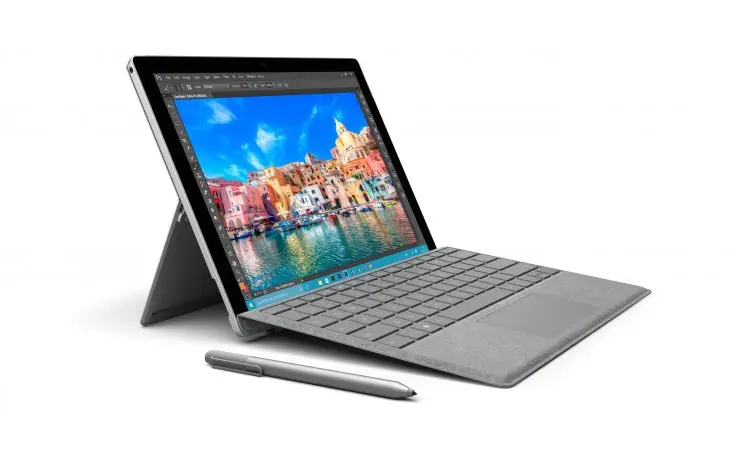
“People Weren’t Productive”
FC: At the time of the original Surface announcement, it was easy to find people who were saying the tablets would quickly displace conventional PCs in a way that, it turned out, did not actually happen. What were your expectations back then, and how did they line up with reality?
PP: It played out in the way that we believed it could. We saw tablets, but we knew people weren’t productive on them. That was 100% clear. They were consumption devices. We had anecdotes. We watched people, we used them ourselves, and the limitations were obvious. And it was almost stunning that people wouldn’t talk about that. The idea that we could make people more productive in a similar form factor was really enticing, because there is something about thin, light, long battery life, in your bag, turns on quick. And there’s something very powerful about a laptop. Just typing, getting the things you need to get done, and being productive and even creative. That’s an anchor for sure.

I think the laptop has also evolved itself. I think what Surface Book is doing, what the Surface Laptop does from a design standpoint, I think those are also elements that people need. It’s evolved in the way that we hoped and saw, and that’s a good thing. And now people have a choice, and that’s a great thing.
FC: You were clear from the start that part of the goal was to inspire other PC makers to try daring things. And in fact you ended up creating a category, and there are a bunch of other devices out there that are clearly in your space. Now that that is true, are you still trying to inspire the rest of the industry?
PP: We built a business, and we have to grow that business. And we are. Are we here to inspire? The answer’s also yes. I have to say that humbly. It seems weird to use the word. I hope people can see the technology we’re creating, use it, and get it to more people. I see that as not only flattering, but awesome for what we’re trying to do, which is help people be as creative as they possibly can, as productive as they possibly can, and getting that Microsoft suite of products and whatever else it is they want to do and bringing it to life. That’s a big deal. I believe in it. I believe in it down to my soul.
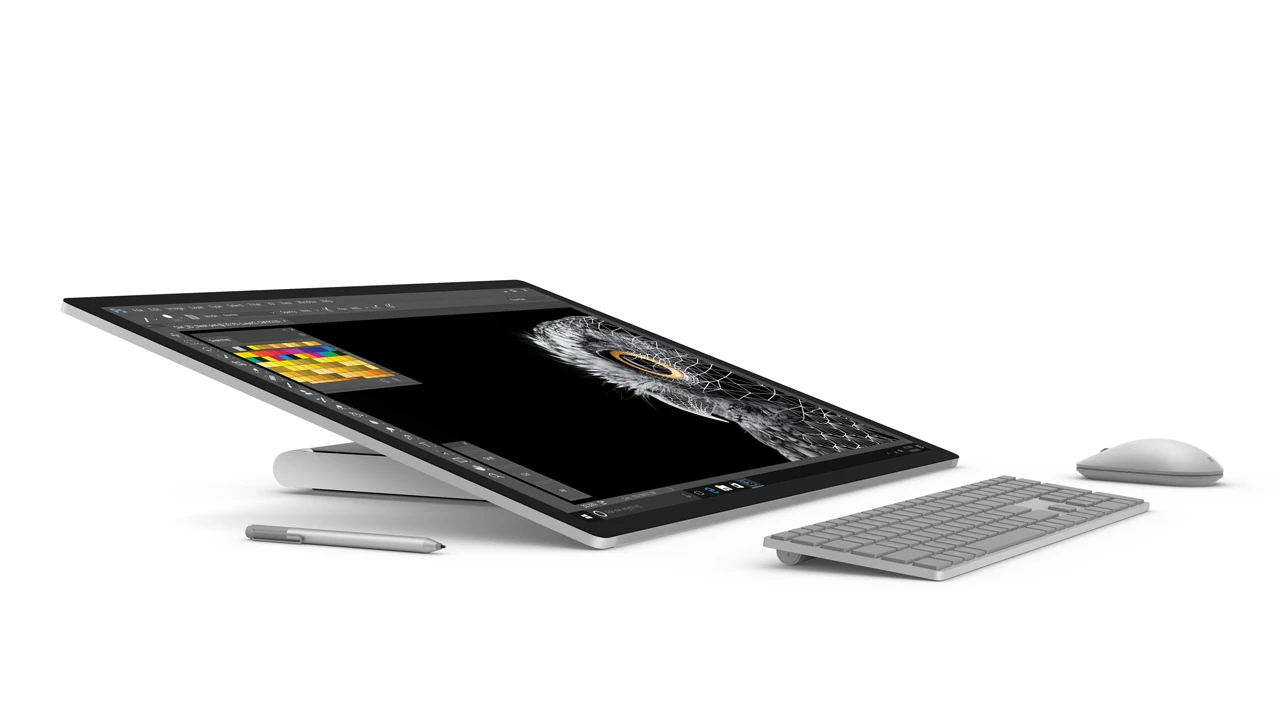
“Surface Studio Was The Original Idea”
FC: Did you plan from the get-go to do things like the Surface Book, and the Surface Studio, and the Surface Laptop, or did that just evolve?
PP: Surface Studio was the original idea for Surface, funny enough. I don’t think we’ve ever said that. The product code name was Alkai. If the team read that name, they would be like, “Oh my gosh, Alkai was Surface Studio, wasn’t it?”
What was called Alkai at the time was a product that you could draw toward yourself and create on. And it turns out that Alkai didn’t make it, because it was resource-constrained at the time. We knew we needed to do Pro, we believed we had to do RT, and then something had to give. It was Alkai that gave, and it was Alkai that made it back.
Surface Book came about after Pro 3. And that came about because we had so many customers saying, “I really want the laptop form factor.” We believed in that heritage of being able to use the screen to consume or write and put the pen on it. And so Book really came to life so that when creatives put the pen down and needed to use it as a laptop, they could. I adore that product.
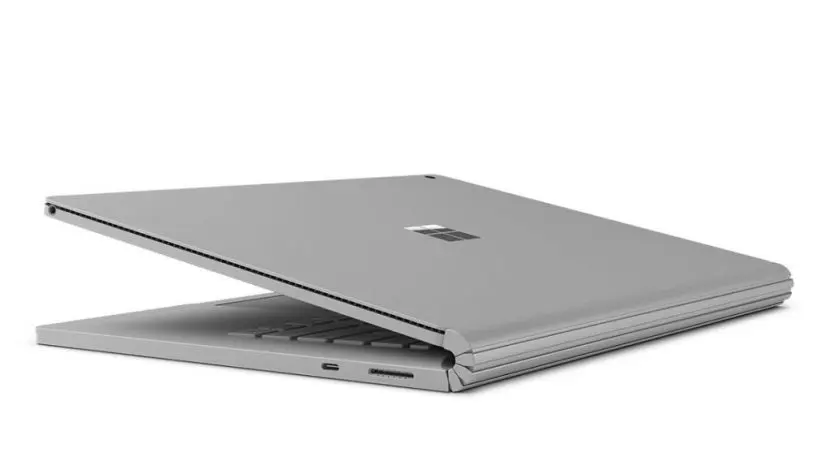
“We Had A Bump With Surface Pro 4 And Book”
FC: In preparation for this conversation, I skimmed back through five years of news coverage of Surface. It seems like when it’s been negative, it’s usually involved bugs and quality control. Can you talk a little bit about what you’ve learned along the way in dealing with those sorts of issues?
PP: Continuously learning is such an important part of what we do. The idea of how our organization has evolved around quality, how we think about products in customers’ hands, the learning of all the data we are able to now pull in and collect from our partners, retailers, and our analytics. We have been pretty relentless. What’s a small bug? What’s a big bug? How do we address these with customers? How do we respond to customers in the right way? How do we make the best possible products?
Every step we take has been a learning step. I can’t tell you the pain I’m in when I get a tweet, or when I’m reading on Reddit that there’s a challenge. And I understand those are going to be there, and there’s a bunch of different reasons for each one. But there’s no set of words that explain that emotion.
We had a bump with Surface Pro 4 and Book. Remember that bump? That was tough. We learned so much. Not only did we get those fixed as fast as we could, and learned and listened, but in the launch of every subsequent product, every one of those learnings goes in.
I feel really good about the quality of our products. I feel really good about the data we see. I feel really good about our customer response. Our Net Promoter Score is higher now than it’s ever been and it continues to go up.
FC: Let’s talk a little bit about the future. Surface Pro went through a bunch of evolutions originally, things like screen size, and the kickstand and keyboard getting better. Lately it hasn’t changed quite so strikingly. Is there room for striking evolutions in form factors in the future?
PP: Absolutely. I’ve got to be careful how I answer it: I think the form factors that are out there right now are pretty awesome. And we see people using them, being creative and productive. But looking at the current form factors and where they could go over time, that’s what we do. There’s a team here that’s learned to both evolve a product and revolutionize a product, and create new form factors. And when you put those three attributes together, and some of that collective experience, you can imagine that there’s a lot more that’s going to come out of this team.
You have to look at where the trends are taking us, where AI and machine learning are taking us, where mixed reality is taking us. All that coming together through Microsoft on our devices is so important.
Recognize your brand’s excellence by applying to this year’s Brands That Matter Awards before the early-rate deadline, May 3.
